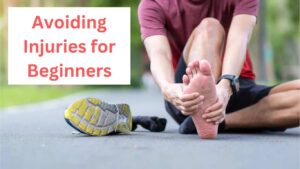When starting a fitness routine, many beginners often focus on the physical effort: the sets, reps, and intensity of their workouts. However, there’s one crucial aspect of fitness that’s often overlooked—rest and recovery. While exercise is important for building strength, endurance, and flexibility, recovery plays an equally vital role in achieving optimal results and avoiding injuries.
In this article, we’ll explore the significance of rest and recovery in a fitness routine, why it’s important, and how to incorporate proper recovery practices into your fitness plan.
What Is Rest and Recovery?
Rest refers to the periods of time when you are not actively working out, allowing your muscles, joints, and body to recover. Recovery, on the other hand, involves the processes your body undergoes to repair muscle tissue, replenish energy stores, and return to a state of balance (homeostasis) after exercise. Recovery doesn’t just happen during sleep but also throughout the entire day as your body adapts to the stress placed on it during your workouts.
Why Is Rest and Recovery Important?
Rest and recovery aren’t just about taking a break from exercise. They are critical for several reasons, and neglecting recovery can prevent progress and lead to a range of issues:

1. Muscle Repair and Growth
When you work out, especially during strength training exercises, you create tiny tears in your muscle fibers. Rest and recovery allow these fibers to repair themselves and grow stronger. Without adequate recovery time, muscles don’t have the opportunity to rebuild and get stronger, which can slow progress or even lead to muscle breakdown (catabolism).
2. Preventing Overtraining and Injury
Overtraining occurs when you don’t allow your body enough time to recover between workouts. This can result in a weakened immune system, hormonal imbalances, fatigue, and an increased risk of injury. Rest days give your muscles time to recover, reducing the risk of strains, sprains, and other injuries that may occur due to repetitive movement or inadequate rest.
3. Mental Recovery
Fitness isn’t just about physical recovery—it’s also about mental recovery. Intense workouts can be taxing on your mind, leading to fatigue and burnout. Taking rest days allows you to clear your head, reduce stress, and maintain a positive relationship with your fitness routine, preventing feelings of dread toward exercise.
4. Performance and Progress
Adequate recovery leads to improved performance. When you give your muscles time to rest and repair, you can return to your next workout feeling stronger, more energized, and ready to challenge yourself. Without rest, fatigue accumulates, which can hinder your performance, making it harder to complete workouts effectively.
How to Incorporate Rest and Recovery into Your Routine
Rest and recovery are essential for beginners, but knowing how to implement them effectively is key to your success. Here are some strategies to help you get the most out of your recovery time:
1. Schedule Rest Days
As a beginner, it’s important to schedule regular rest days to give your muscles time to recover and rebuild. The general recommendation is to take at least one or two rest days each week. If you’re doing intense training, you may need more recovery time. These rest days should include very minimal physical activity.
- Example: If you work out 4-5 days a week, schedule 2 rest days in between. For instance, you can train on Monday, Wednesday, Friday, and take Tuesday, Thursday, and the weekend for rest and recovery.
2. Active Recovery
Active recovery doesn’t mean taking a complete break from exercise. Instead, it involves low-intensity activities that help blood circulate through your muscles, easing tension without placing excessive stress on them. This could include activities such as:
- Walking or light jogging
- Yoga or stretching
- Swimming at a relaxed pace
- Cycling at a moderate pace
These activities promote blood flow, reduce muscle stiffness, and help accelerate the healing process.
3. Sleep and Restful Recovery
Sleep is one of the most important aspects of recovery, as it is when your body does most of its repair work. During deep sleep, your body releases growth hormones, which are vital for muscle repair, recovery, and overall health.
- Aim for 7-9 hours of sleep each night, depending on your body’s needs.
- Try to create a relaxing bedtime routine, such as reading or meditating, to help you wind down and get quality sleep.
4. Proper Nutrition for Recovery
Nutrition plays a huge role in your recovery. To effectively recover from exercise, your body needs the right nutrients. After a workout, focus on protein and carbohydrates to support muscle repair and replenish glycogen stores.
- Protein helps repair muscle fibers and encourage muscle growth. You can get protein from sources like chicken, turkey, tofu, eggs, legumes, or protein powder.
- Carbs help replenish glycogen stores in muscles that are depleted during exercise. Opt for whole grains, fruits, vegetables, and legumes.
In addition to these, consider hydrating well by drinking water throughout the day and replenishing electrolytes with a balanced diet or drinks that contain sodium, potassium, and magnesium (especially after intense workouts).
5. Foam Rolling and Stretching
Foam rolling and stretching help release tight muscles, improve flexibility, and promote muscle recovery. Foam rolling targets specific areas of tightness, while stretching can help lengthen your muscles and increase range of motion.
- Foam Rolling: Use a foam roller on your quads, hamstrings, calves, and upper back to release tension and tightness. Aim for 5-10 minutes of foam rolling after each workout.
- Stretching: After exercising, stretch the muscles you’ve worked on. Hold each stretch for 15-30 seconds to allow your muscles to lengthen and reduce stiffness.
6. Listen to Your Body
As a beginner, one of the most important recovery tools you have is your body’s signals. If you feel overly fatigued, experience pain, or notice decreased performance, it’s a sign that your body might need more rest.
Don’t push through fatigue or pain. If you need more rest than what’s scheduled, take it. Over time, you’ll become more in tune with your body’s needs and know when to push harder and when to take it easy.
Signs You Need More Rest
Sometimes, it can be difficult to know when you’ve overdone it. Here are some common signs that you may need more rest or recovery:
- Persistent soreness or stiffness in muscles
- Fatigue that doesn’t improve with sleep or nutrition
- Difficulty focusing during workouts or feeling mentally drained
- Decreased performance (unable to lift the same weight, run as far, or complete as many reps)
- Mood changes, such as irritability or frustration
If you notice any of these signs, consider adjusting your rest days or incorporating more active recovery strategies.
Conclusion
Rest and recovery are just as important as the workouts themselves when it comes to achieving your fitness goals. As a beginner, it’s easy to overlook the importance of recovery, but it’s essential for muscle growth, injury prevention, and overall performance. Make rest days a priority in your routine, listen to your body, and give yourself the time needed to recover properly. With the right balance of exercise and recovery, you’ll be able to reach your fitness goals more effectively and sustainably, while maintaining your health and well-being along the way.




